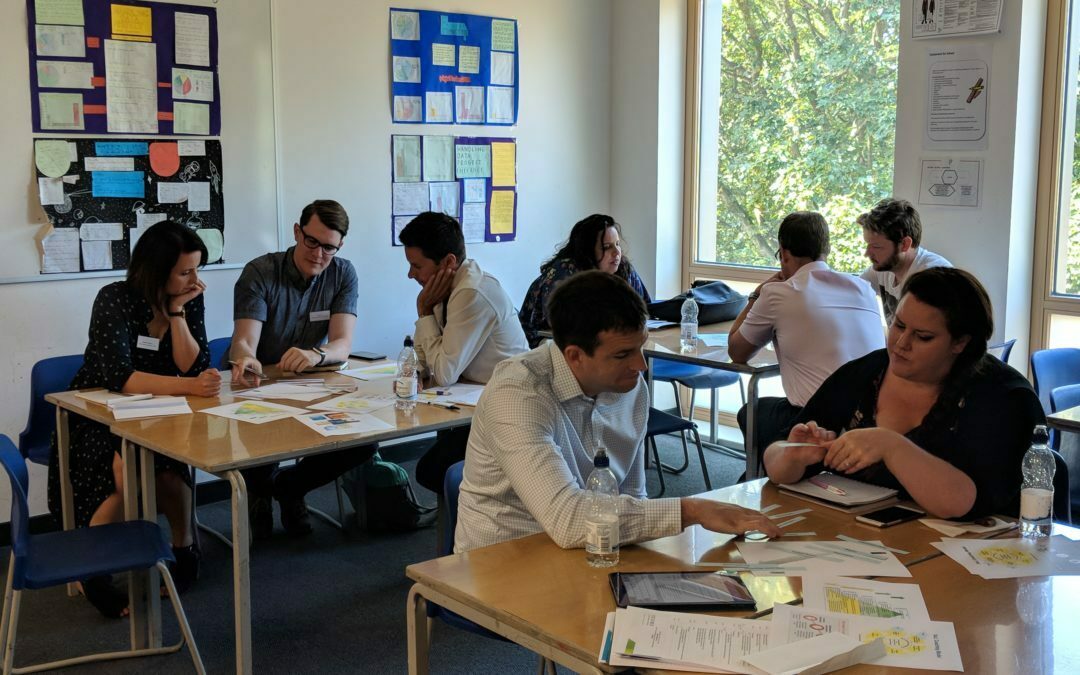Teachers can learn a lot from their colleagues. Research in Florida and North Carolina has shown that when a highly effective teacher gets a job at a new school, their new colleagues tend to improve as a result. Indeed, about one fifth of teachers’ expertise (measured by their ability to increase attainment) is attributable to the teachers they have worked with in previous years.
These findings are exciting. They suggest that an important source of school improvement is sitting right under our nose: our colleagues.
So does that mean school leaders can sit back and wait for teachers to learn from each other? No. Detailed analysis of teachers’ social networks suggests that the more a teacher seeks advice from a colleague, and the more effective that colleague is, the more the teacher will learn. The reverse is also true. Making the most of colleagues’ expertise therefore requires that the right connections are being made and sustained in our schools.
In hospitals, there is a clear hierarchy of expertise. Requests for advice can be passed up from medical student, to trainee, to registrar to consultant. Doctors’ areas of specialism are well defined and easy to identify. In schools, the situation is not quite as clear.
So are teachers approaching the right people for advice? Two recent studies provide some insight.
James Spillane and his colleagues tracked the social interactions of the teachers in fourteen schools over five consecutive years. They found that effective teachers were no more likely to be approached for advice than their colleagues. If anything, it was the other way round. Effective teachers were more likely to approach others for advice!
A separate team led by Anne Wilhelm has looked at the same question in different schools. They found a more optimistic result: in their data, more effective teachers were more likely to be approached for advice by their colleagues.
How should we interpret these findings? It appears that some schools (like those studied by Wilhelm) are doing a better job than others (like those studied by Spillane) in developing the connections that spread expertise between classrooms.
So what can school leaders do to remedy this? Research shows that head teachers have an important influence on the way in which their teachers collaborate. Where you know a teacher has expertise in a particular area, try to make this visible to other staff – perhaps by inviting them to present a case study of their methods to other staff.
A more direct approach could also be fruitful. A remarkable experiment in Tennessee found that inviting teachers with matching strengths and weaknesses (e.g. one who is brilliant at whole-class feedback and one who is just starting out) to collaborate resulted in improved attainment among the pupils of the weaker teacher. The trick for school leaders is to create the trust and set the norms that make this feel natural for teachers.
Research shows that inexperienced teachers benefit most from exposure to expert colleagues, suggesting that this is good place for school leaders to focus their efforts. Of course, many schools provide mentoring for NQTs. But perhaps we need to go one step further, matching less experienced teachers (NQT or not) with more expert teachers, based on their individual development needs. As these needs change over time, the relevant mentor will also change.
While collaboration is no substitute for structured professional development, research shows that it really matters. School leaders will be best placed to decide how they can leverage this best in their schools. But all schools should be working hard to maintain the plumbing that helps expertise flow between classrooms. Without it, they may be wasting a valuable, sustainable, freely available source of school improvement: their colleagues.
Sam Sims is a postdoctoral researcher at the Centre for Education Improvement Science, UCL Institute of Education. He is co-author, with Becky Allen, of The Teacher Gap. You can find him on twitter @DrSam_Sims


